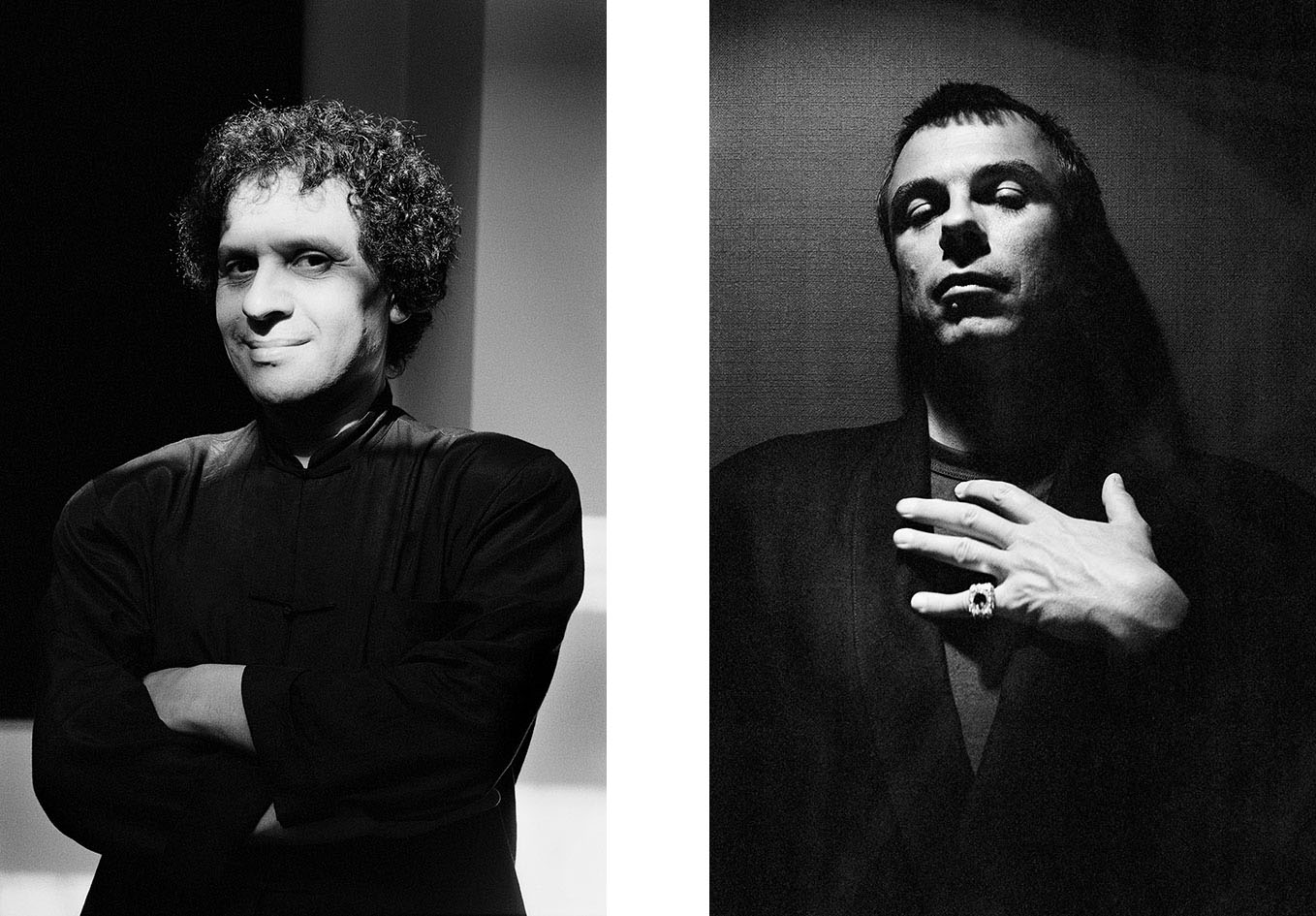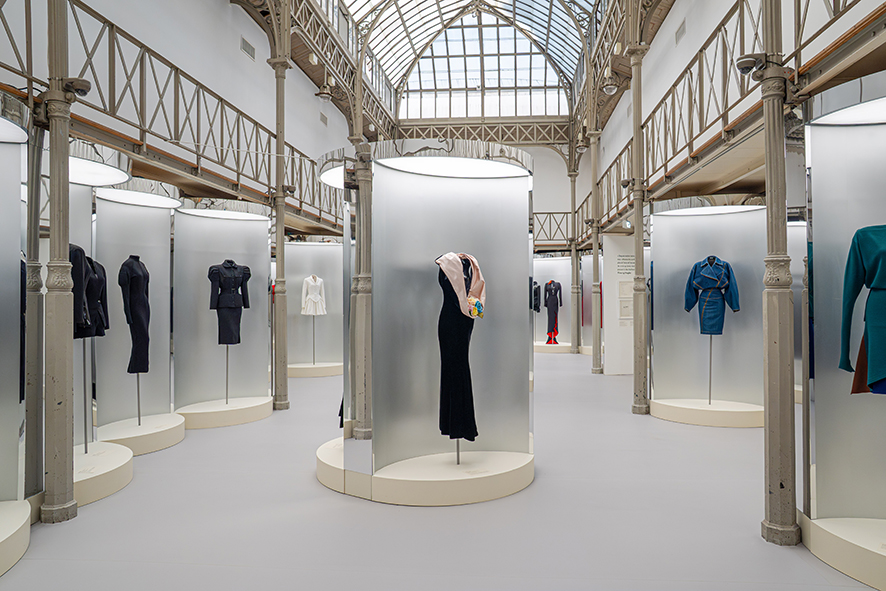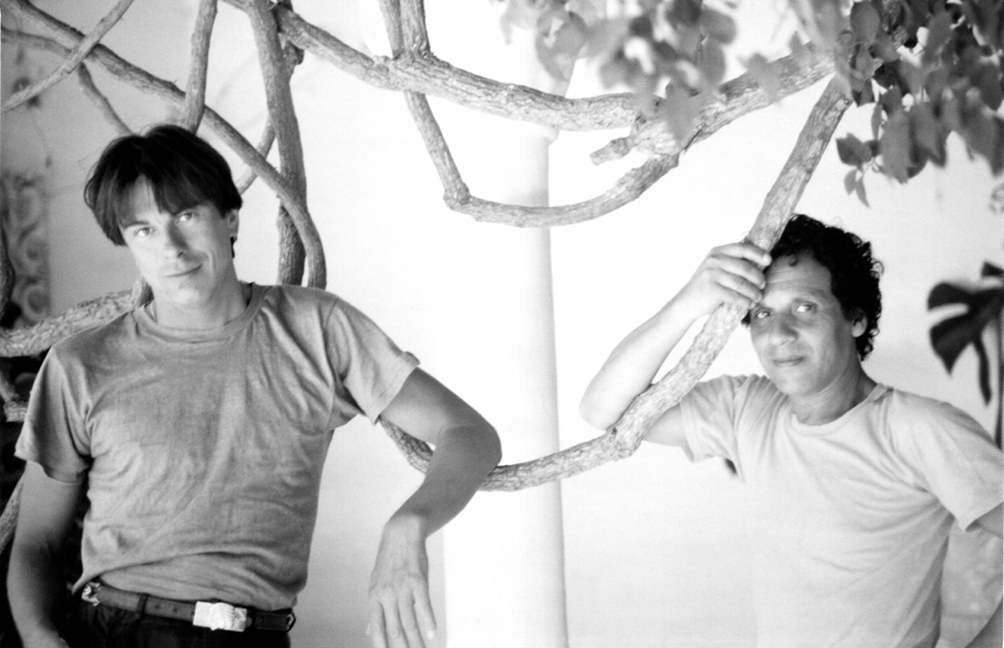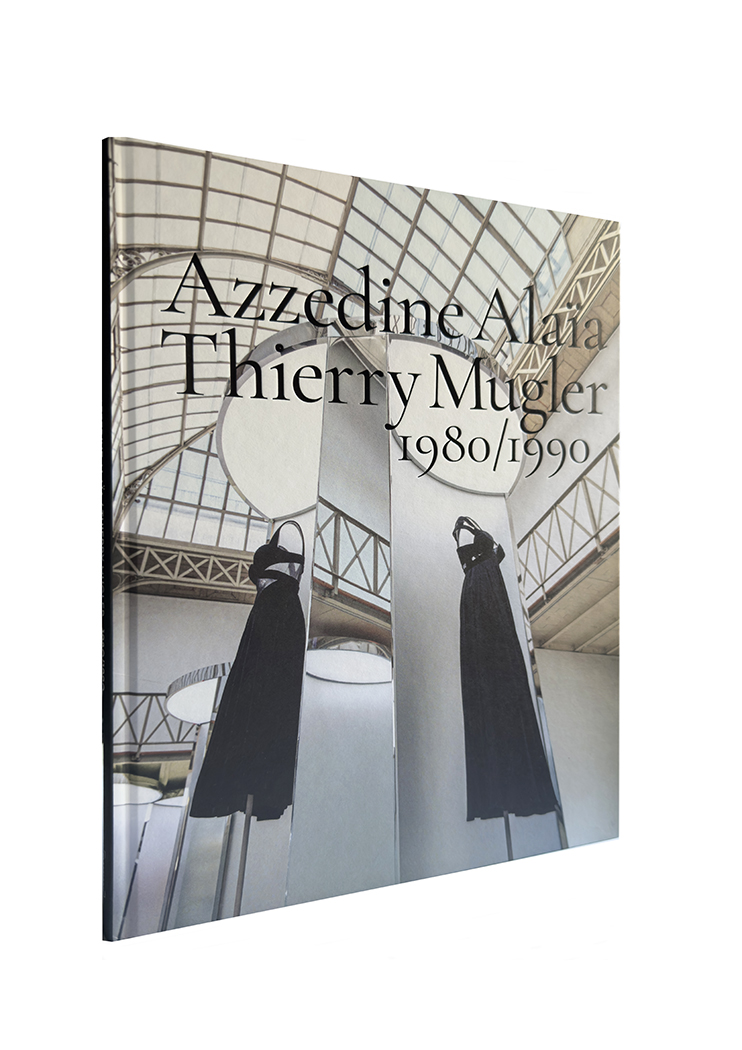Azzedine Alaïa, Thierry Mugler
We have been very influenced by each other. Thierry Mugler

Azzedine Alaïa, Paris 1982 ph. Alice Springs © Helmut Newton Foundation - Thierry Mugler, Monte Carlo 1984 Alice Springs © Helmut Newton Foundation
Established in Paris in 1956, Azzedine Alaïa owes his training more to his female friends and customers than to any training school. He accompanies them in their desire for a demanding yet discreet wardrobe. A great couturier who has lost none of the closeness that a fitting or cutting session imposes, Azzedine has acquired the reputation of a great cutter heir to an academic tradition that places him in the direct line of Cristóbal Balenciaga or Madeleine Vionnet.
His expertise and technical virtuosity are coveted not only by the elegant women of the moment. Couturiers and fashion designers know they can count on him to refine certain complex designs or lend a hand on a collection that needs finishing. This was the case for Yves Saint Laurent. It was also the case with Thierry Mugler, whom Alaïa met in 1979 and with whom he forged a real friendship.
For his autumn-winter 1979-80 collection, Mugler invited Alaïa to design the series of tuxedos for his fashion show, and in the press kit that accompanied the presentation of his creations that season, he thanked him publicly. In the hands of the man who never wanted to transgress the laws of cut, powder-grain and satin trouser suits acquired a form of notability and fluidity that was much appreciated. This collaboration encouraged Alaïa to become a designer himself. Thierry Mugler strongly encouraged him, and his support proved both vital and unfailing. On Rue de Bellechasse, where Azzedine has set up his workshops, Mugler, always flanked by his bicycle, brings in the top fashion journalists. In 1982, at the request of the American department store Bergdorf Goodman, Alaïa presented a show in New York. It was Mugler who persuaded him to do so, Alaïa imagining that the invitation was a joke! The designer, friend and admirer, accompanied him, organized and built the show himself, answered and translated interviews, and supported his comrade in the smallest tasks, for which he was eternally grateful. In the summer, they spend their vacations together in Tunisia at the home of lifelong friend Latifa and Leila Menchari.

View of the Azzedine Alaïa, Thierry Mugler exhibition ph.Stéphane Aït Ouarab
Companions for a decade that they preempted stylistically, Alaïa and Mugler freely let their influences influence each other's creations. In the 1980s, both divinized the woman, proclaiming the return of glamour in glory and Hollywood as their inspiration, a world away from the folkloric fashions of the 1970s. They shared a common silhouette where majestic shoulders contrasted with choked waists and blossoming hips, memories and fantasies of the fashions of the 1930s and 1950s and the couturiers Adrian, Jacques Fath, Christian Dior and Cristóbal Balenciaga in the lead.
If Mugler had a flair for showmanship, orchestrating the biggest ever parade of his creations and fantasies at Zenith in 1984, Alaïa had a taste for intimacy and perfection. But it's with a shared spirit that their collections respond to each other. Since our meeting,” says Thierry Mugler of his friend, ‘my clothes are less abstract, more in touch with reality, the body feels more at ease in them, and his are something more striking (...) I think that with me, Azzedine Alaïa has been able to free himself, let's say, to move towards suits with more ergonomic, sinuous lines’.
Azzedine Alaïa, Thierry Mugler, 1980-1990 two decades of artistic affinities - Video Sylvie Delpech
It's striking to see the extent to which Alaïa's creations have borrowed the charisma of the silhouettes Mugler used to claw his way through hundreds of shows, while the former concentrated on just a few.
United by “mutual love at first sight”, Mugler always showed the young couturier a preview of his collections. He even agreed that Zuleika, his lifelong muse, and Mirabelle, his no less regular collaborator, would marry into the Alaïa family and company, which he firmly supported in its development.
Contemporaries, friends, both deceased within six years of each other, the two designers showed deep respect for each other's careers throughout their lives. Their daywear and eveningwear echoed each other, dictating a four-handed fashion style that was the hallmark of contemporary fashions.
Azzedine Alaïa, the couturier and collector behind a vast and renowned fashion heritage, has preserved over 200 Thierry Mugler-branded creations, some 40 of which are exhibited here in dialogue with his own archives.
I helped him with the administration to officially set up his label. Thierry Mugler

Thierry Mugler, Azzedine Alaïa, Sidi Bou Saïd, circa 1980
Order the catalogue:
GUIDED TOURS OF THE EXHIBITIONS
The Foundation offers guided tours of the current exhibition at 18 rue de la Verrerie in partnership with the cultural mediation agency Des Mots et des Arts which organizes tours led by professionals specializing in fashion history. They offer visitors an overview of the current exhibition, the life and work of Azzedine Alaïa, as well as the location’s history and architecture.


